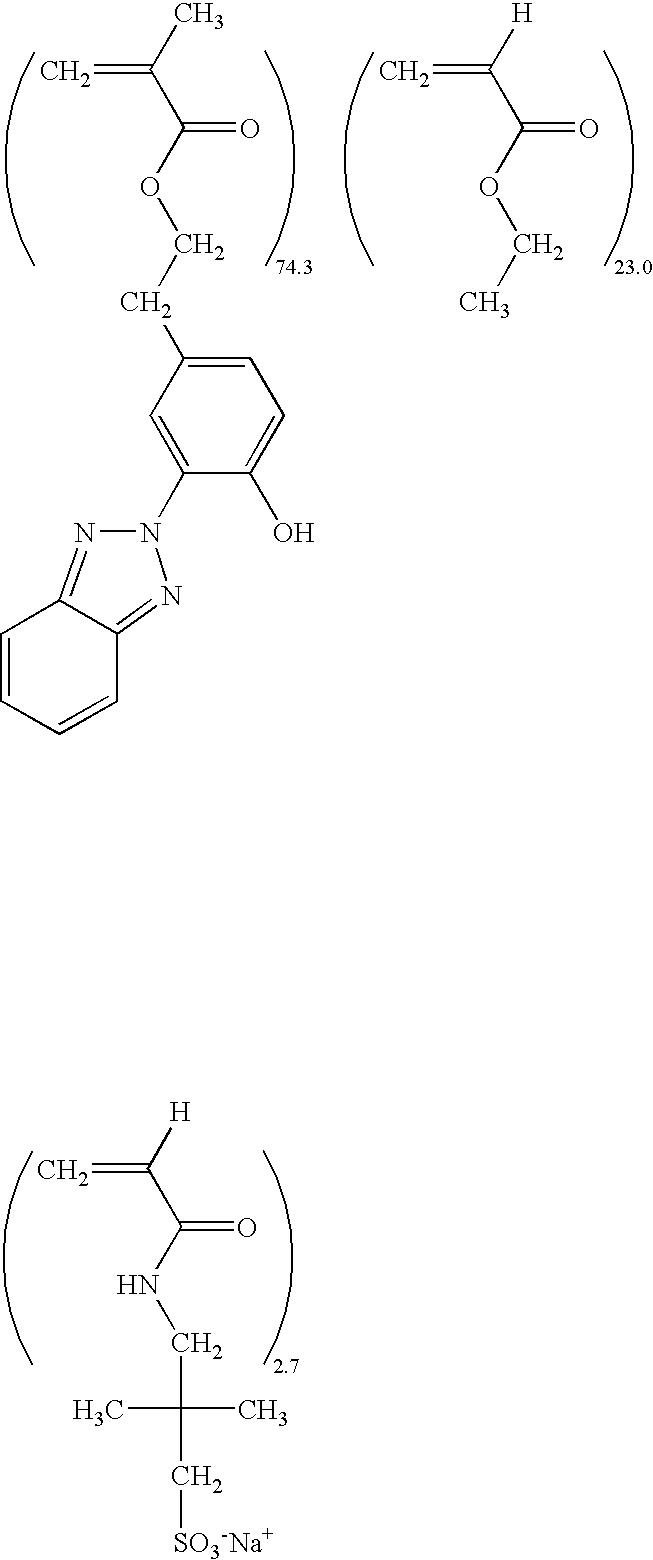Antistatic layer for electrically modulated display
a charge control and antistatic layer technology, applied in the direction of photosensitive materials, discharge tubes, luminescent screens, etc., can solve the problems of affecting the display quality, so as to prevent uncontrolled localized static buildup, friction control, and sufficient conductivity
- Summary
- Abstract
- Description
- Claims
- Application Information
AI Technical Summary
Benefits of technology
Problems solved by technology
Method used
Image
Examples
example 1 (
CONTROL)
[0109] A liquid crystal display was prepared as follows: A 125 micron polyethylene terephthalate substrate was coated with a layer of ITO (300 ohm per square resistivity) forming the first electrode (conductive layer) on one side of the substrate. The ITO was laser etched with thin lines to electrically separate rows in the first electrode with each row corresponding to an individual character in the display. An imageable layer containing gelatin and droplets of cholesteric liquid crystal was coated on the ITO layer. A color contrasting black layer containing gelatin and cyan, magenta, yellow, and black pigments was coated on the imageable layer. Thin bands of the two coated layers were removed along an edge of the display perpendicular to the laser etch lines. This exposed the ITO along the edge of the display to allow electrical contact to the first electrode.
example 2 (
INVENTION)
[0110] A liquid crystal display was prepared as follows: A 125 micron polyethylene terephthalate substrate was coated with a layer of ITO (300 ohm per square resistively) forming the first electrode on one side of the substrate and a transparent antistatic layer was coated on the side opposite the ITO layer. The ITO was laser etched with thin lines to electrically separate rows in the first electrode. Each row corresponds to an individual character in the display. The transparent antistatic layer was formed by coating an aqueous composition comprising a binder and a conductive antistatic agent with a weight ratio of 40:60, resulting in a layer with resistivity of 1.6×1010 log ohms per square. Polyethyleneimine (such as Mica A-131-X, supplied by the Mica Corporation) was used as the polymeric binder, and a cross-linked vinylbenzyl quaternary ammonium polymer is used as the conductive antistatic agent. An imageable layer containing gelatin and droplets of cholesteric liquid ...
example 3 (
INVENTIVE) (SINGLE LAYER COATING OF UV ABSORBER AND ANTISTATS)
[0111] Coating solution A (preparation described below) was coated on bare 4 mil poly(ethylene terephthalate (PET) film substrate at 2.0 cc / ft2 wet coverage to obtain a layer of approximately 2.4 μm thick. Corona discharge treatment at 100 jouls / ft2 was applied to the coating surface of PET film prior to coating to improve adhesion. The ITO side of the substrate was laser etched with a series parallel line with the laser etching the ITO in a continuous connected line.
Coating solution A (all refers to weight percentage of active ingredient in final solution)
[0112] 0.3125% polythiophene (active ingredient of Baytron P, available from Bayer)
[0113] 5.9375% polyurethane (Sancure 898, available from Noveon) 5.00% UV latex
[0114] 0.5% CX-100 (polyurethane crosslinking agent, which is a polyfunctional aziridine crosslinker for the polyurethane-acrylic copolymer dispersion, obtained from Neo Resins (a division of Avecia)
[0115...
PUM
| Property | Measurement | Unit |
|---|---|---|
| wavelengths | aaaaa | aaaaa |
| surface roughness | aaaaa | aaaaa |
| thickness | aaaaa | aaaaa |
Abstract
Description
Claims
Application Information
 Login to View More
Login to View More - R&D
- Intellectual Property
- Life Sciences
- Materials
- Tech Scout
- Unparalleled Data Quality
- Higher Quality Content
- 60% Fewer Hallucinations
Browse by: Latest US Patents, China's latest patents, Technical Efficacy Thesaurus, Application Domain, Technology Topic, Popular Technical Reports.
© 2025 PatSnap. All rights reserved.Legal|Privacy policy|Modern Slavery Act Transparency Statement|Sitemap|About US| Contact US: help@patsnap.com

